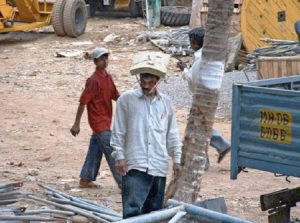 Hard hats are commonly used in many types of workplaces to protect employees from head trauma caused by falling objects, striking their head against an object, or electrical hazards.
Hard hats are commonly used in many types of workplaces to protect employees from head trauma caused by falling objects, striking their head against an object, or electrical hazards.
With over 100,000 occupational head injuries reported every year, prevention of head injuries is an important factor in every safety program. A survey by the Bureau of Labor Statistics (BLS) of accidents and injuries noted that 84% of workers who suffered impact injuries to the head were not wearing head protection. The majority of workers were injured while performing their normal jobs at their regular worksites.
The “Do’s” of Hard Hats:
- Always inspect hard hats before each use for any visible signs of dents, cracks, gouges, penetration, chalking, loss of gloss, or any other signs of damage prior to use.
- Replace hard hat even when hairline cracks start to appear.
- Replace hard hat that has been struck by a forceful object, even if no damage is obvious.
The “Don’ts” of Hard Hats:
- Do not drill holes, alter or modify the shell. Alterations may reduce the protection provided by the hard hat.
- Do not use paint, solvents, gasoline, chemicals, or harsh cleaning materials on the shell.
- Do not wear hard hat backwards. The peak should always face forward, unless designed to be worn backwards.
A FALLING OBJECT IS A WEAPON…A HARD HAT IS YOUR PROTECTION!!!
Download flyer: STOTW_613_Head Protection Download Spanish flyer: STOTW_613_Head Protection_esp

